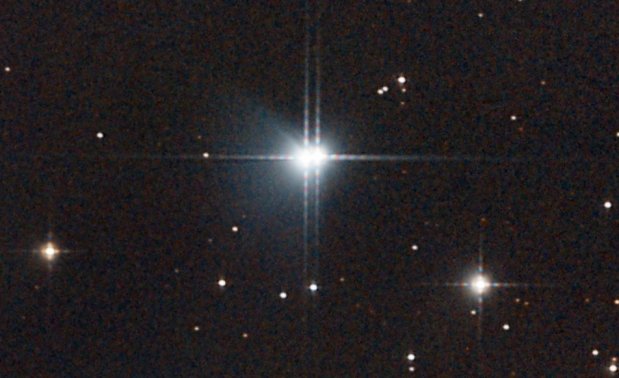
 |
The fine double star Alya (Theta Serpentis) shines just above center, its two white components 22 seconds of arc apart. Only a tiny amount of orbital motion has been recorded over the past 2.6 centuries. North is down. Slightly brighter Theta-1 (Alya A) is on the left, Theta-2 (Alya B)is at right. The spikes on the stars are artifacts caused by struts that support the telescope's secondary mirror. See the full image. Thanks to Steve Lewis of Ft. Worth Texas. |